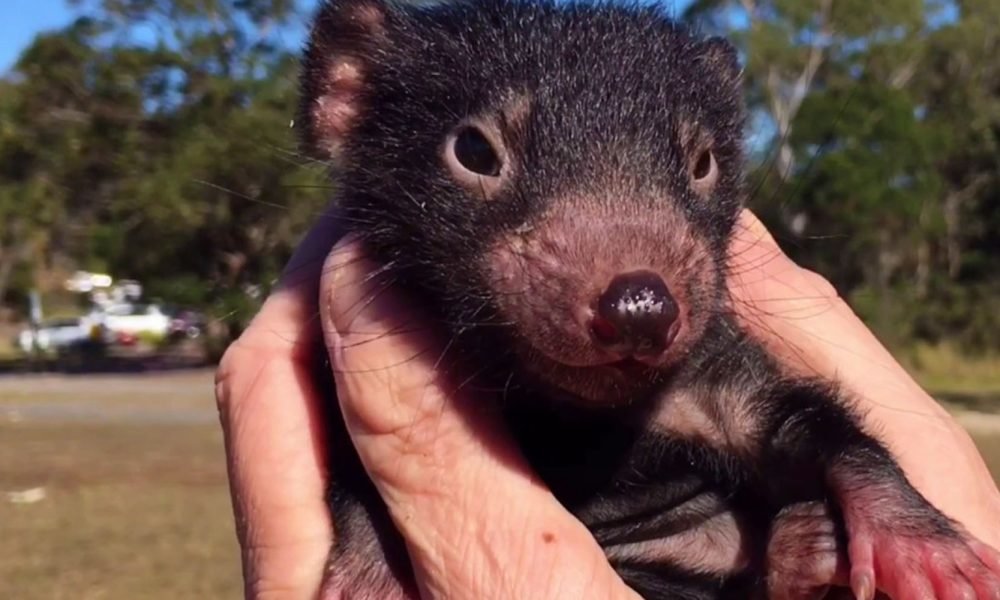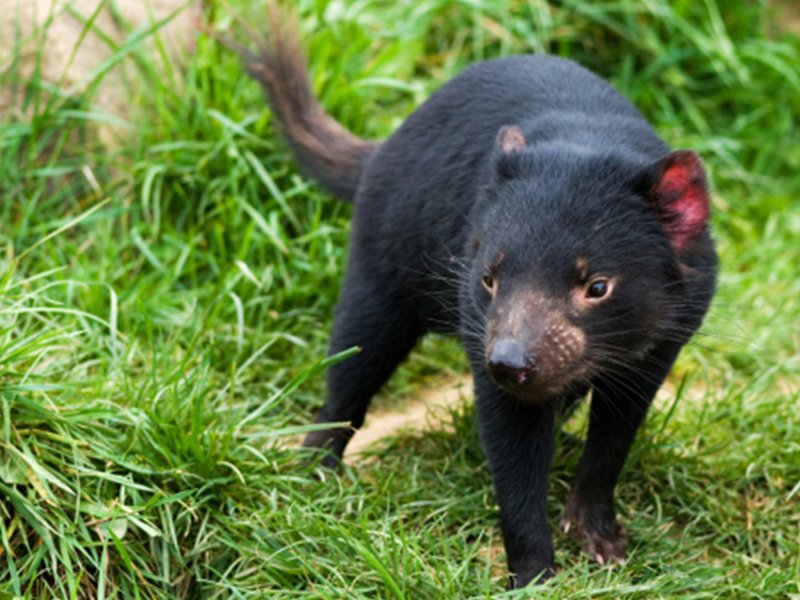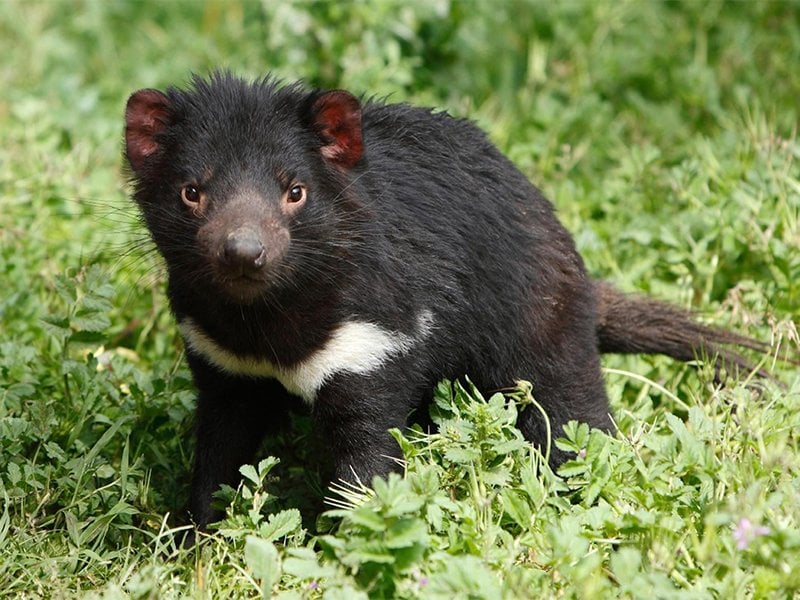
How Crowdfunding is Helping the Survival of Tasmanian Devils

Crowdfunding is considered by many as one of the greatest platforms ever created on the internet, because it has been beneficial to budding entrepreneurs and start-up companies. But endeavors of the entrepreneurial nature are not the only ones that benefit from crowdfunding, there are other projects that it helps finance too. Crowdfunding campaigns were able to help sick people (with no funds) get the life saving treatments that they need, assisting less fortunate individuals, and fund causes that seeks to save the environment, among others. Recently, another worthy cause that crowdfunding has proven very effective for is saving an entire animal specifies from certain extinction.
The Tasmanian Devils

Admit it or not, some of you think of the ‘Tasmanian Devil’ as a cartoon character. Yes, Taz is a Looney Tunes character, but he was modded after a real animal found in Australia. It was depicted in the cartoon series as angry, snarling, baring its teeth and growling – it’s actually a pretty accurate description of the animal’s temperament. They are carnivorous creatures known to have bad tempers and can display rabid fits of rage when provoked. They got their name from early European settlers – after witnessing their , they decided to call them ‘Devil’, maybe aptly so!
As for their appearance, the mammals are sometimes called baby bears because they are coated with fur, sometimes brown, sometimes black, and they are small and stocky. Their front legs are longer than their rear legs, and walk like pigs do. These bad tempered creatures are said to be the world’s largest carnivorous marsupial. They can grow up to 30 inches long and weigh up to 26 pounds. When it snarls, it shows sharp teeth that can cause injuries because Tasmanian Devils are known for having strong jaws, thus delivering powerful bites. Their diets usually include carrions, fishes, birds, insects, and snakes. They are kind of loners, staying in their homes and going out at nights only to feed. Their homes are usually burrows, logs, and caves.
Their Population is Shrinking
Tasmanian Devils used to thrive in all of Australia, not just the island of Tasmania. Later on, they were found only in some parts of Tasmania. Scientists’ suspect that the reasons for their reduced numbers, are widespread efforts made in the late 1800s to completely eliminate any trace of the animal, since they are thought to prey on livestock. One of the ways they did this was using dingoes (kind of feral dog) all over Australia and the Island of Tasmania, trained to kill these little devils.
The Threat of Extinction
The threat of extinction for Tasmanian Devils was not so much from the efforts made in the past to eradicate them or their inability to repopulate, but rather due to a disease that lowered its population to a numbered few – Devil Facial Tumour Disease (DFTD). In order to save the species of the Devils, scientists need to find a cure for DFTD.
What is Devil Facial Tumour Disease?

Scientists discovered an illness that plagued the Tasmanian devils and coined a name for it in 1996. It is considered aggressive and is a transmissible form of cancer. These tumors or huge lumps appear on the faces of these marsupials, and cause them to have a hard time eating. The animals eventually die of starvation. When Tasmanian devils get this disease, they are expected to die within a span of 12 to 18 months. The outbreak of the disease led the Government of Australia to recognize Tasmanian Devils as a vulnerable and endangered species and with a high risk of extinction.
Save Our Tasmanian Devils Crowdfunding Campaign

Because of the threat of extinction for the Tasmanian Devils, a joint venture between the University of Sydney’s Faculty of Science and the Toledo Zoo, created a crowdfunding campaign they called ‘Save Our Tasmanian Devils’. The target amount of the campaign was $20,000, and it has reached an estimated $36,113 already, proving that a lot of people are intent on helping save the species. Because of its success, a group of scientists went on an expedition in some parts of Tasmania. Their trip was highly successful, because BBC has reported that the scientists found 14 healthy Tasmanian devils, clearly not affected with DFTD. The healthy group of devils is now safe from getting infected by sick ones. Scientists also hope to study the healthy colony in order to guarantee the survival of the species. Once the studies conclude, and the healthy colony has grown in numbers, they are going to be released back into the wild.
More in Crowd Funding
-
`
Famous Entrepreneurs Want You to Learn From Their Biggest Failures
No one can be an overnight success, as failure is an inevitable baggage on an entrepreneurial journey. Some famous entrepreneurs speak...
December 6, 2023 -
`
Miss your Pet When Traveling? Book These Hotels if You Want a Furry or Feathered Friend Welcoming You at the Lobby
Do you miss your pet, having left him/her behind when traveling? At some hotels, you get your “I-really-miss-my-pet” fix, all thanks...
December 6, 2023 -
`
Downsizing after Retirement is a Pain, but Here’s How You Can Go About It
Retirement needs extensive planning, and it is not just finances. Without proper plans for this next phase of life, chances are...
December 6, 2023 -
`
These are Some of the Greatest Inheritances Recorded the World-over
The Bloomberg Billionaires Index has listed the 25 richest families around the globe, and control over 1 trillion dollars of the...
December 5, 2023 -
`
Stunning Hotels Around the World Which Even Celebrities Fawn Over
Where do Celebs vacation? In certain aspects, superstars are similar to us, but not when it comes to vacation lodging. Stars...
December 1, 2023 -
`
Unlocking Financial Success: Timeless Wisdom from John Paul DeJoria
In a recent interview with Forbes, John Paul DeJoria, the visionary entrepreneur behind Paul Mitchell and Patrón Tequila, shared a wealth...
November 8, 2023 -
`
The Ultra Wealthy Want Their Privacy and They’ll Do Anything to Get It
Ultra-rich rapper Nicki Minaj in her pink Lamborghini worth $400,000 or celebrity entrepreneur Mark Cuban stepping out from his private jet worth $40...
October 31, 2023 -
`
How Celebrities Managed to Solve Their Financial Woes
Celebrities have lost billions and filed for bankruptcy while drowning in debt. If they can resolve their financial issues, then so...
September 8, 2023 -
`
Useful Real Estate Strategies at Various Stages of an Investing Career
There is no one perfect investing approach, as real estate investors are aware. At various phases of your investing career, investigate...
September 2, 2023















You must be logged in to post a comment Login